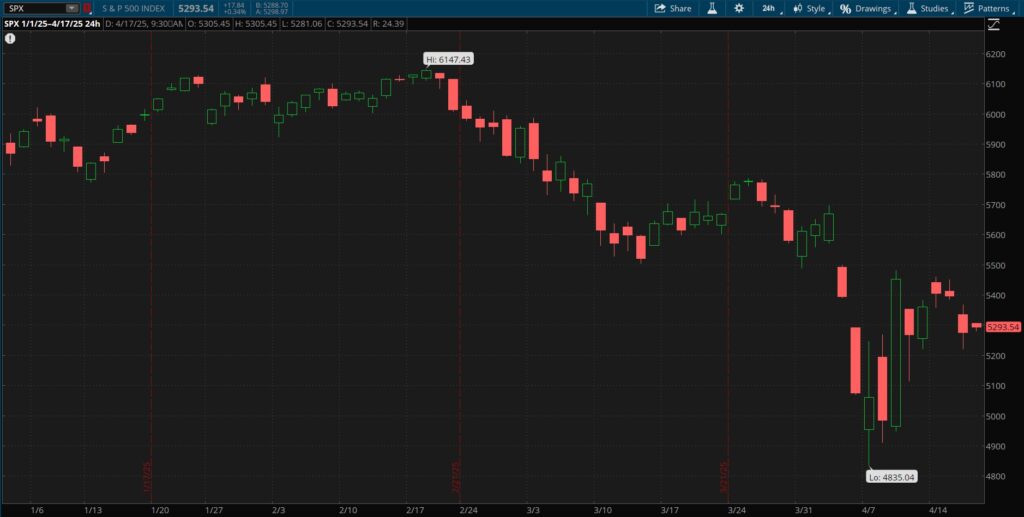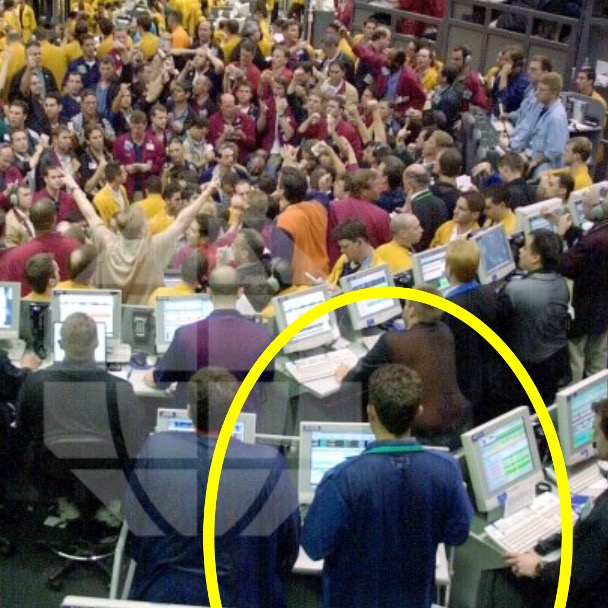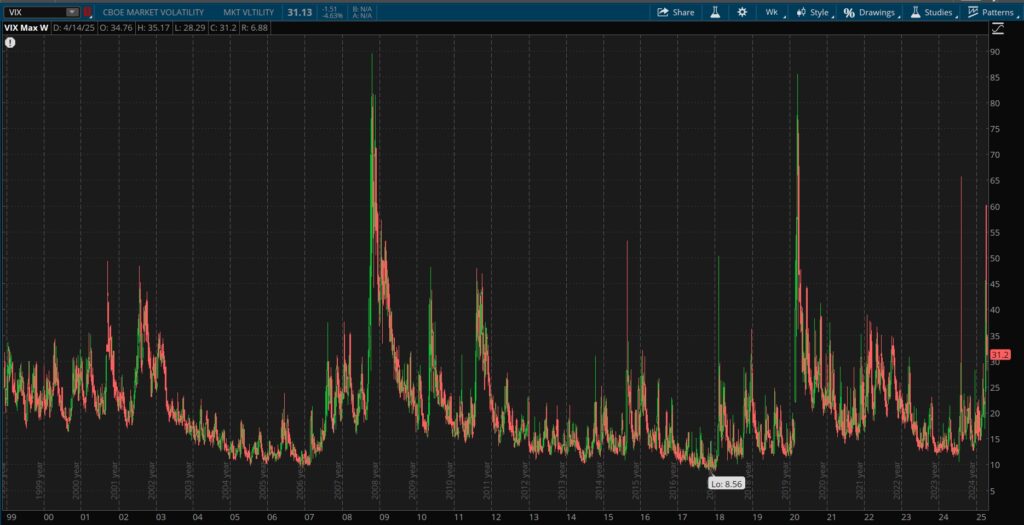Just as markets were getting their footing on the heels of March’s vicious 10% selloff, April has delivered some of the wildest moves in market history — and we’re only halfway through it.
On April 2nd, the S&P 500 closed at 5,670. Two days later? Down more than 10%. And just when the panic started to settle in… Washington steps in and the market rips 9.5% higher in a single day.
Despite the uptick, we’re still more than 14% off from the 52-week high set on Feb. 19.

This kind of volatility sends long-term investors running for cover. But for us? This is when trading shines.
Tariffs, debt fears, and geopolitical shocks have turned the old “buy and hold” playbook upside down. Most retail investors look at this environment and think: “How can anyone navigate this mess?”
But that’s exactly why trading is about to have its moment. Most investors see chaos and freeze. Traders? We run toward it.
The Trader’s Job: Keep the Market Efficient
Volatility isn’t noise. It’s information. It’s opportunity.
When the markets break — when relationships disconnect and fear drowns out fundamentals — that’s when real traders step in.
We bring liquidity. We bring price discovery. We bring discipline when the market needs it most.
That’s the job. Not to guess what’s coming next — but to read what’s happening right now and act with conviction.
It’s not a theory for me. I’ve lived it every day for nearly 30 years.
From Open Outcry to Screens: Trading Through Evolution

I got my start on the CME floor back in 1997 — when trading was loud, fast, and raw.
It was the early days of Globex, when the pits were still packed but the future was moving to the screen. I watched Nasdaq futures go from open outcry to pixels right in front of me. Suddenly, speed was the edge. Execution was everything.
But by 2003, volatility dried up. And when the action disappears, real traders know it’s time to move.
That’s when I got recruited to a bond prop firm. The Fed was gearing up to move rates — and I knew bond volatility was about to explode. From 2003 to 2010, I traded the yield curve through the wildest bond markets in a generation. In 2008 alone, while the financial system was breaking apart, I made $4 million trading that volatility.
And when the markets shifted again in 2011, so did I… That’s when I became an options market maker at the CBOE.
Because that’s what real traders do. When the market landscape changes, we adapt. We follow volatility. And under no circumstances do we ever waste a crisis.
This Is the Time to Learn How to Trade
Volatility is back — bigger and meaner than anything we’ve seen in decades.
Just take a look at this VIX chart. Going back to 1999, there are only two times we’ve seen the VIX spike higher than what we’ve seen since November: the 2020 Pandemic and the 2008 Financial Crisis.

Retail investors are starting to wake up. They’re realizing the old “just keep buying” strategy doesn’t cut it when your portfolio’s bleeding and every headline screams recession, war, and rate shocks.
This is why active trading is about to matter more than ever.
If you’re passionate about the markets, now’s the time to level up. It’s time to learn how to actively protect and grow your portfolio through volatility — not just ride it out.
Don’t just average down and hope it gets better. Learn how to read volatility. Learn how to spot the signals. Learn how to respond with a plan — not react with fear.
Volatility always breeds opportunity. That should be our mantra right now…
And it’s true whether you’re trading futures, options, or equities. The door’s wide open right now. But you have to know how to play the game.
The Trader’s Edge: Experience, Adaptability, and Action
I’m not here to teach theory. I’m not handing out textbook strategies.
What I’m offering is experience — the kind you only earn by taking real risk in real markets.
From the chaos of 2008 to the algorithm wars we fight in today’s options markets, I’ve lived through the trades that make or break careers.
And if there’s one thing I know for sure, it’s this: when volatility spikes, the old relationships break down — and that’s when real traders get to work.
If you know how to track real market flow — not the headlines, but the footprints that institutional players leave behind — it’s possible to find trades with huge upside even in this kind of chaos.
That’s exactly what I focus on inside Advanced Notice.
Every day, I track Unusual Options Activity — where big money is moving before the market catches up. It’s one of the most powerful indicators I’ve ever used in my career. Especially when volatility spikes, UOA often shows us where the real action is happening.
This is your chance to learn how professional traders find opportunity when others panic.
And if you can read it right, you’re going to be in a very powerful position.
Let the world panic. Let the headlines scream.
But if you want to survive and thrive in this market, don’t sit around waiting for “normal” to come back.
Because one thing’s certain: volatility isn’t going anywhere.
Remember, the creative trader wins…
Jonathan Rose
Founder, Masters in Trading
